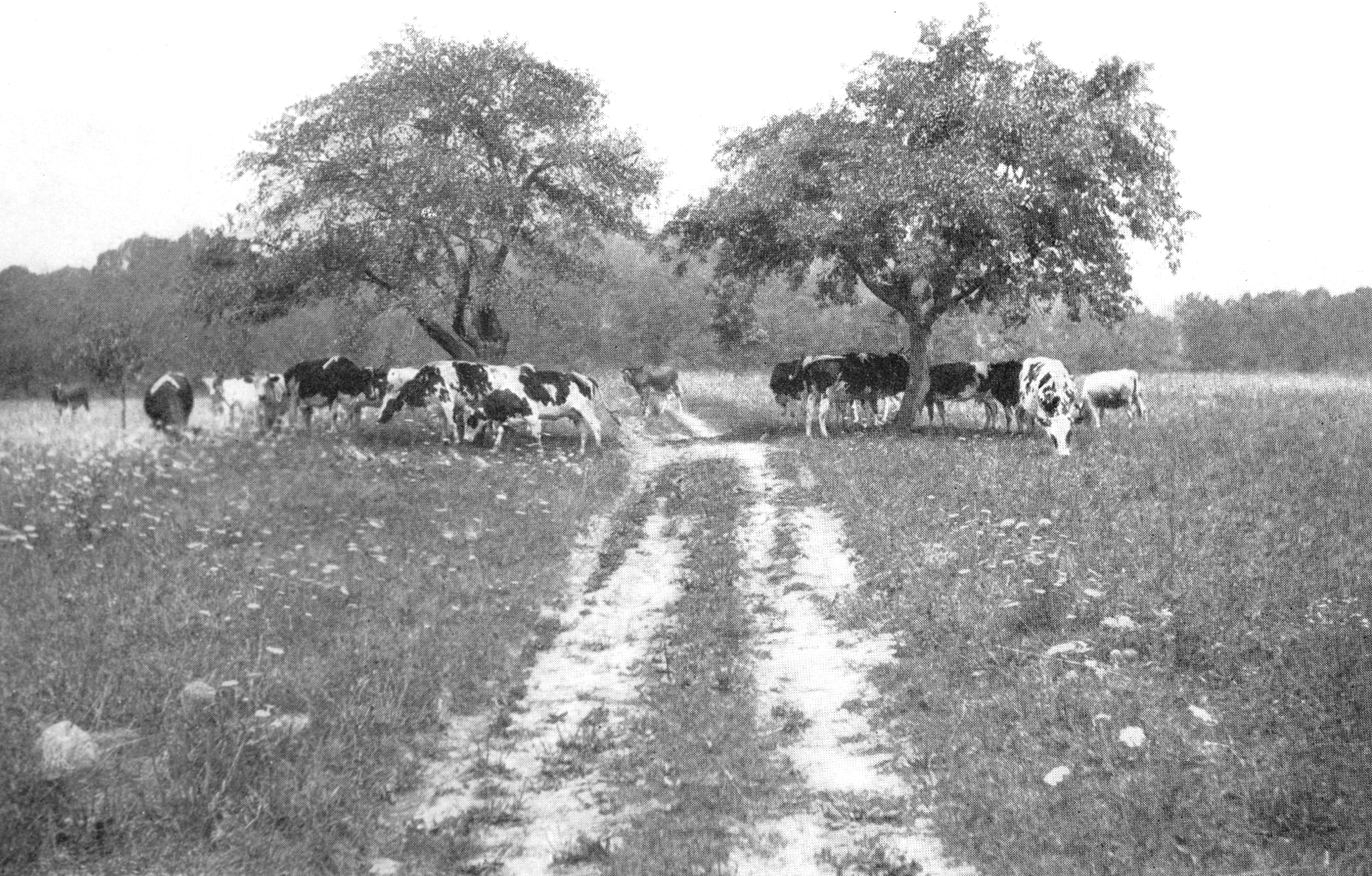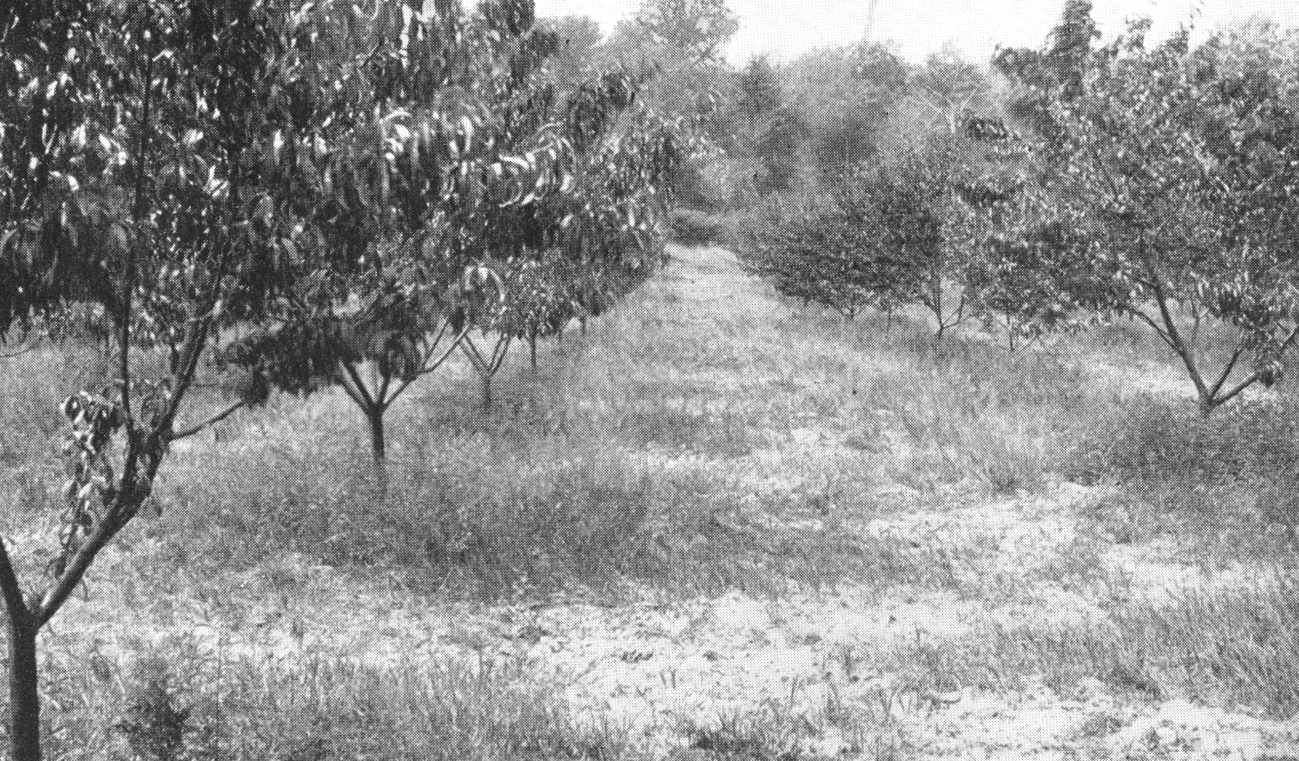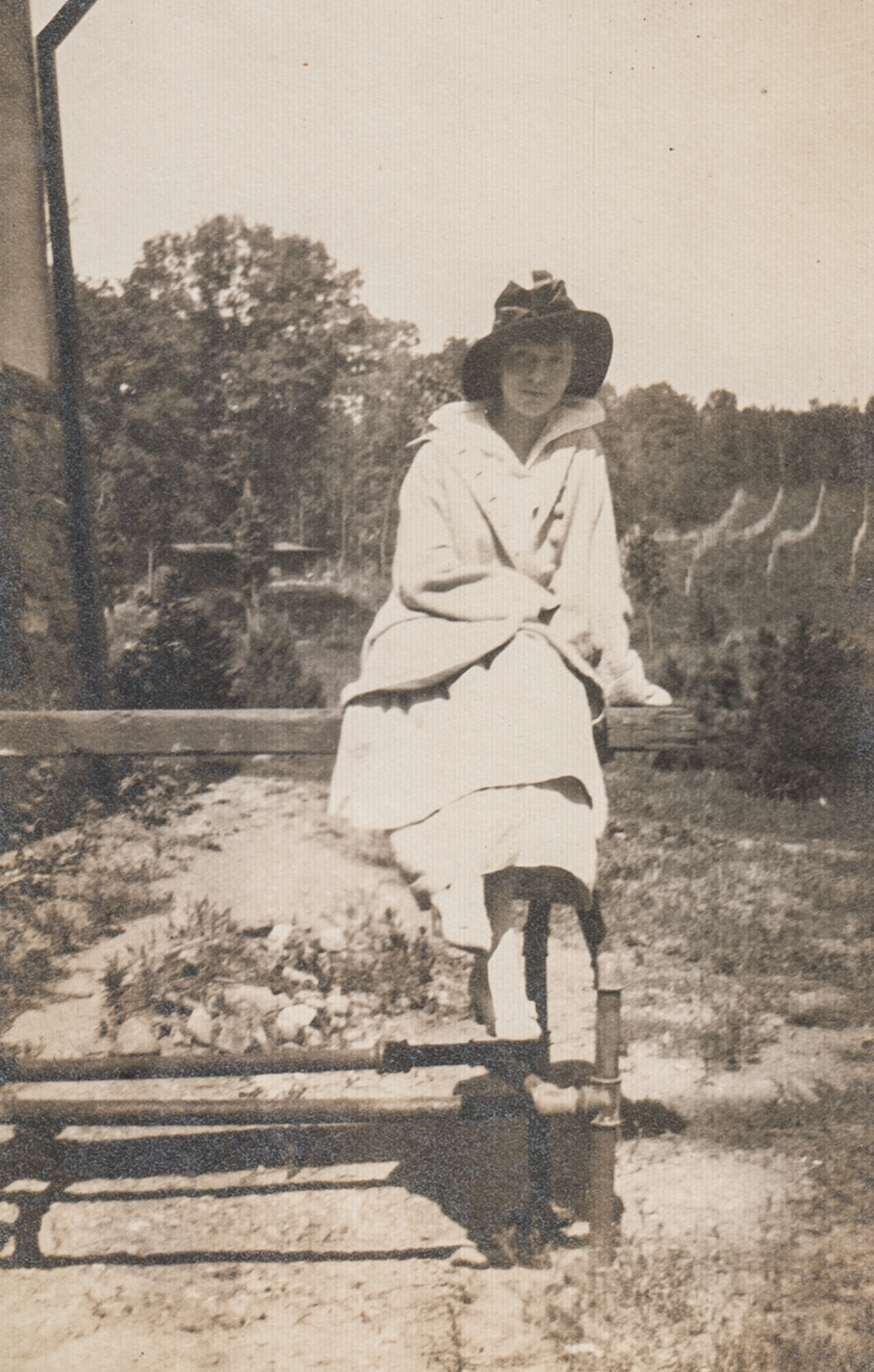Agricultural Landscapes
In addition to serving as the family's home, Craftsman Farms was a working farm that by 1913 supplied his Craftsman Restaurant in Manhattan with dairy products, eggs from the chickens, and even fresh 'country' water. The reverence for his cows that Stickley demonstrated in the pages of The Craftsman was similarly reflected in the property, a large portion of which was devoted to grazing areas.

Cows grazing as featured in a photograph from The Craftsman. The location of this pasture is unidentified, though it may well have been taken in the fields that lay to the east of the residential core.
Stickley also cultivated peaches and apples, and by the sale of the property in 1917, these reportedly numbered 2,000 trees on various plots. The formally planted orchards were to the north of the driveway, just over the railroad tracks as one entered. A smaller orchard–likely the remnants of an earlier orchard that had been abandoned–lay to the west of the residential core and separated that from the farm buildings.

Peach Trees planted in regular rows and interspersed with apple trees as featured in The Craftsman.

The view east from the edge of the residential core in Stickley's time was remarkably open and allowed him–whether on the porch of the Log House, in the outdoor dining area, or at the front of the White Cottage to have a view of the productive and picturesque landscape he was transforming. The distinct horizontal ridge in the distance is the raised bed of the train tracks, behind which there were trolley tracks. It is likely on this trolley that Stickley would ride to the Morris Plains station and begin his commute to Manhattan.
Another point of pride for Stickley were the vineyards he planted, describing them–somewhat hyperbolically we imagine–in glowing terms: "as lusty and as well grown as those of the Rhone and Loire valleys." Visible only in the background of a few photographs, the actual extent of these vineyards is not well documented. Their orientation, however, was a key component in undertsanding the alterations to the landscape made after the Stickleys departed in 1917. Seen below, the vineyards essentially run along a north-south axis and gently rise up the hill. Today, however, there is evidence of terracing on that slope, but running perpendicular to original orientation. It now appears, then, that at some point during thier ownership the Farny family terraced this slope, but that it has little to do with Stickley's time on the property or his vineyards.

Visible in the background the vineyards are oriented along the same line as the Garage and Chauffeur's Apartment and respond clearly to the gentle undulation of the hillside. At some point after the Stickleys departed, this landscape was significanlty altered by making it steeper and adding terraces.